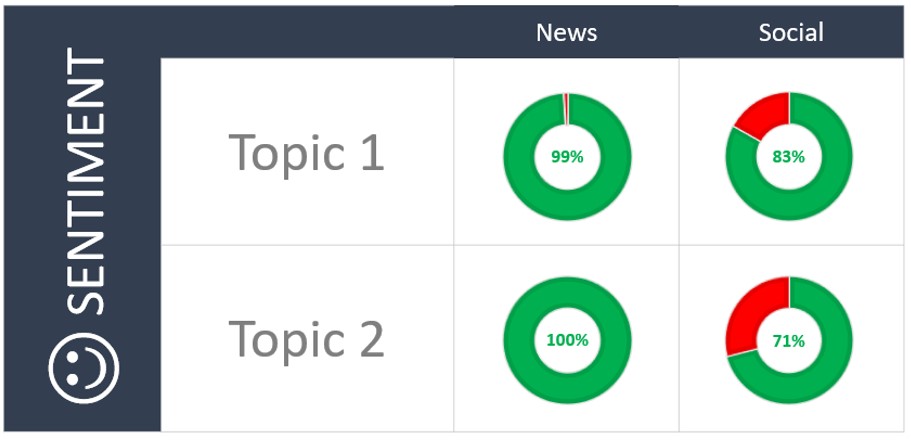A lot has happened over the last year and a half. There was the anti-climactic ‘Storm Area 51, They Can’t Stop All of Us’ viral Facebook event, the world saw an image of a black hole for the first time and Greta Thunberg triggered a climate movement on an unprecedented global scale, just to name a few.
While all this was going on, I left the PR measurement nest to expand and develop my marketing horizons only to return home last week as head of marketing for CARMA International, the global media intelligence agency. Three days into my new role, PRWeek and AMEC serendipitously co-hosted the inaugural PRWeek Measurement Conference in London and I couldn’t have imagined a more perfect refresher to the fast-evolving world of communications evaluation.
Throughout the day, there were two themes that kept popping up, both important things non-measurement PR folks should be aware of:
Planning in PR is a problem. In fact, most of us aren’t even doing it at all.
If there was one key takeaway from last week’s conference, it’s that planning is crucial. Now, planning isn’t a new concept to PR, especially not when it comes to measurement – it has always been front and centre as the first of the Barcelona Principles. But what was particularly striking last week was how much it was emphasised again and again by every speaker, telling me that planning – or lack thereof – has become a serious issue.
Why is it so important? Planning helps your team align on what it is you want you want to get out of your campaign and what success looks like in terms of your desired audience behaviour. From there, you can set very specific key performance indicators (KPIs) and build a meaningful measurement framework that will enable you to optimise and improve your future PR efforts. Planning is not a timeline of PR tactics. It requires a lot more attention, critical thinking and time. The sad reality however, is that it’s often overlooked. As PR professionals, we’re constantly under pressure and deadlines but planning is absolutely fundamental to the work that we do. It is not something we can afford to deprioritise when it comes to long-term success and proving the value of our work.
If you don’t have the budget to hire a measurement consultant or you’re not sure where to start and want to learn more, AMEC (the International Association for the Measurement and Evaluation of Communication) is on hand to help. Just last week it launched a primer to PR planning, the first of many planning tools to come. Other great tools to check out is the Integrated Evaluation Framework (IEF), a useful guide to building a solid measurement framework based on industry best practice, and the Measurement Maturity Mapper (M3), a diagnostic tool designed to help you understand where you are in your measurement journey.
Artificial intelligence, the great servant but terrible master.
Every week, there seems to be a flashy new automated measurement platform on the scene, each delivering unparalleled insights, slick interfaces and real-time reporting at competitive prices. Back in my client and agency-side days, I bought into these false promises hoping to save a pretty penny, however the reality is far from ideal: these tools are only able to count the easy stuff (think ‘counts and amounts’ – stuff like impressions, likes, shares and tweets) but when it comes to capturing the things that matter, like what did my audience think, feel or do, they’re lacking.
Last week, CARMA’s Co-managing partner and Chairman of AMEC, Richard Bagnall, moderated a panel in which he asked: is there still a role for humans in measurement and evaluation?
The answer is yes. Not only are we useful, we are necessary. No doubt technology has revolutionised our ability to do the heavy lifting required to handle massive data sets, however when it comes to measuring and understanding human behaviour, telling a story from the data, and deriving meaningful insights, machine learning algorithms are no match for our innate human empathy.
Below is a snapshot taken out of one of our client’s earned media report for an event. At first glance, the social buzz around the event looks quite negative, which doesn’t marry up with the overwhelming positive sentiment towards our client we see in print coverage. What’s going on?

The print coverage was human-coded by our analysts, allowing for more accurate and in-depth analysis, whereas social media sentiment was pulled through from an automated platform. Looking deeper into the social media data, our analysts revealed that the negative sentiment was actually directed towards Donald Trump, and not our client. In another recent example involving AMEC, the sentiment towards its Measurement Month appeared to be quite negative on social, however human analysis uncovered that this metric was pulling through negative comments geared towards AVEs, which as we all know is a good thing!
Our recommendation to all of our clients is to use a blended approach of machine and human, or as we like to call it, automation and curation. Machines can help us do the heavy lifting, but only a human mind can deliver what matters.
Yoo Mee Pontonnier heads up marketing for CARMA globally and is based in London. Always the curious learner, you can find her out and about exploring London and other cities, or listening, watching and reading anything to do with mythology and history. Prior to joining CARMA, she gained diverse marketing experience working both client and agency sides at Ketchum, Estée Lauder Companies and Christie’s.